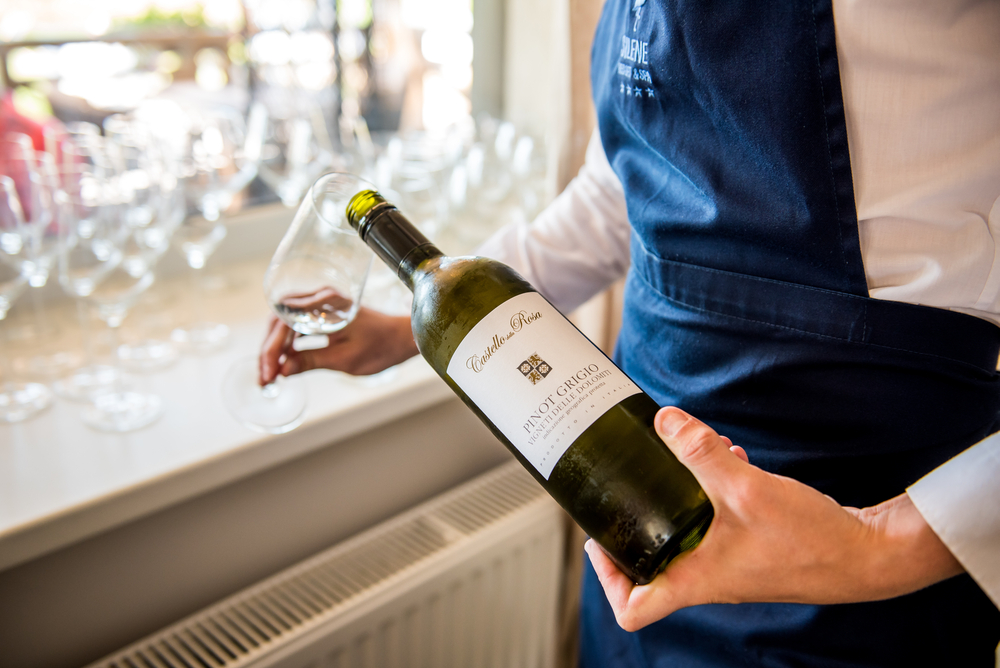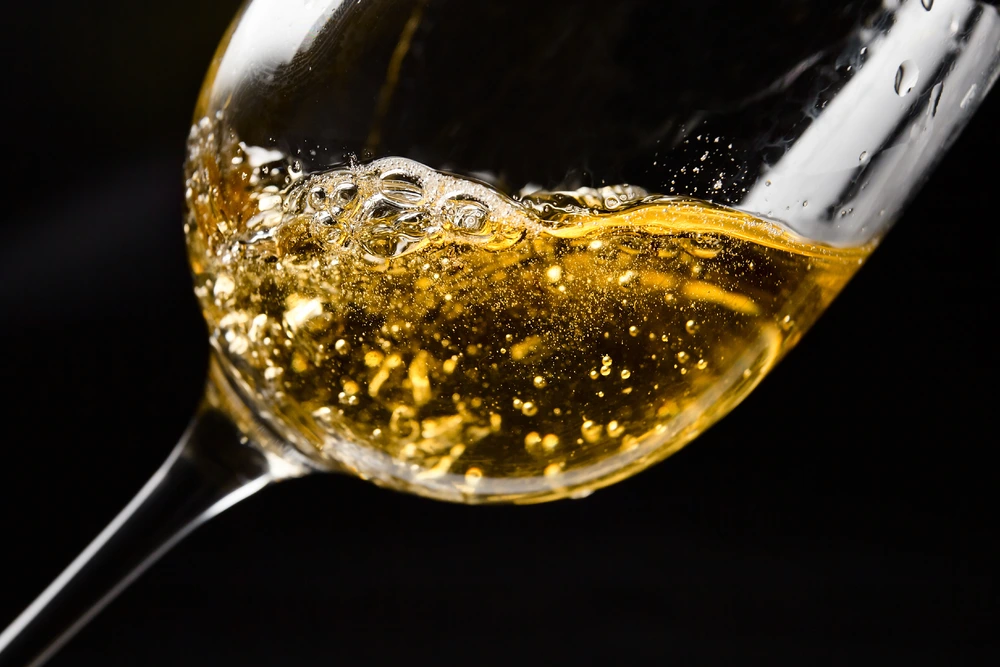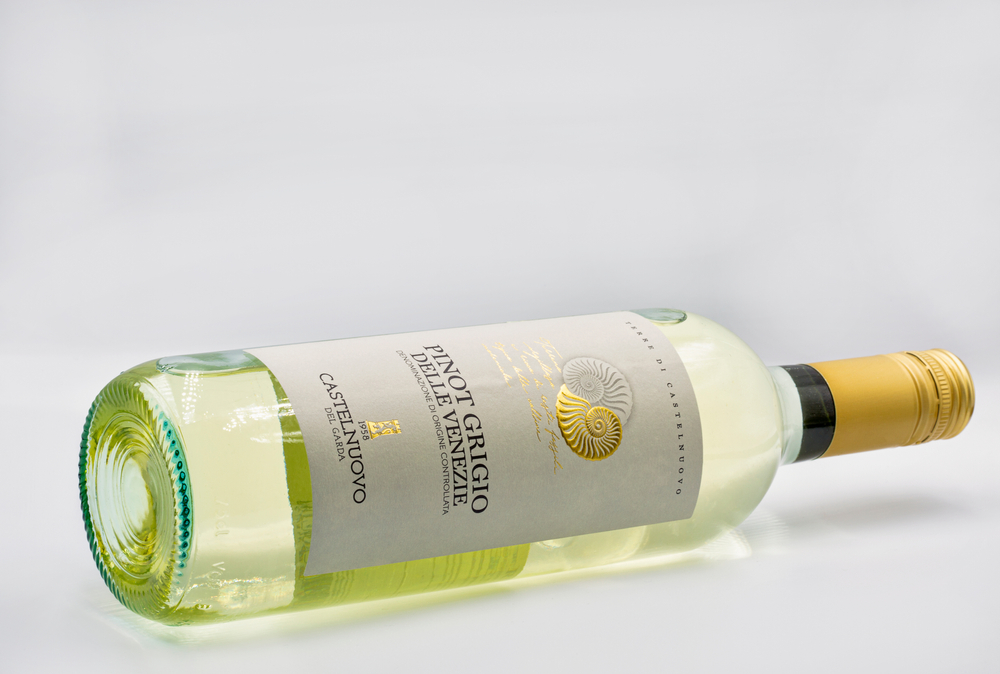Pinot Grigio is one of the most popular wines globally because of its fruity flavors and smooth texture. However, it’s also a wine that gets debated in many circles, specifically its dryness or sweetness.
Some people claim it is a dry wine, while others believe it is sweet. So what is going on here? A unique and fascinating situation that deserves a deeper dive for a more complete understanding.

Is Pinot Grigio Sweet or Dry?
Pinot Grigio and Pinot Gris are the same grape variety but produce different wines, a fact that we’ll talk more about later when comparing Pinot Grigio and Pinot Gris wines.
The Grigio variety is created by harvesting these grapes early to keep their acidity potent.
Typically, these grapes are harvested when they’re still rather gray, which is essential for creating the unique taste profile standard with the Pinot Grigio wine family.
But is a Grigio sweet or dry? Ah, there’s the crux of the debate! Pinot Grigio is considered a medium-dry white wine with about 10-30 grams of sugar per liter of wine. That may seem like a lot, but it is relatively little sugar for wines.
Sweet wines may have closer to 45 to 70 grams of residual sugar per liter of wine. That’s 4-7 times higher than the driest Pinot Grigio and double the sugar of the sweetest.
That said, some regions produce Pinot Grigio which may be sweeter than others.
Italian Pinot Grigios are drier and may have close to five grams of sugar at the most. French, Australian, and US Pinot Grigio wines cut back on the acidity and have a sweeter overall taste, with upwards of 30 grams of sugar.
These varying levels are a big reason this wine is so debated. But even at their sweetest, Pinot Grigios are still considered dry.
Related: Calories in Pinot Grigio.
Common Flavors In Pinot Grigio Wines

Pinot Grigio wines may also have many flavors, most of which are quite fruity. Unfortunately, that fruity flavor also causes some people to think that a Grigio is sweet.
It’s a common reaction because people often associate fruity flavors with sweetness. Especially because Pinot Grigio also has tinges of other, sweeter flavors that may be associated with sugary foods.
For example, some Pinot Grigios taste of honey and blossom, which are both pretty sweet flavors that can cause you to think a Grigio is sweeter.
Grigios also have green apple, lemon, and lime flavors, as well as even more tropical flavors in some regions. For example, Italian Grigios are less fruity and more acidic, while New Zealand Grigios have tropical aftertastes.
These differing flavors help Grigio pair well with many food types.
For example, it may pair well with some desserts, like a fruit salad and Greek Yogurt. It also blends well with barbecued meat, particularly lean meats with minimal sauce.
Sweet and salty tastes are your friend when pairing Grigio with food, so seek out any food with a bit of a kick that isn’t too sweet, as this may overpower the Grigio.
Pinot Grigio Styles: Driest to Sweetest

Like all wines, Pinot Grigio comes in many styles.
These varieties typically include varying dryness and sweetness levels, which help wine fans choose the Grigio that meets their needs. Let’s break down these different wine options and help you identify the type that fits most comfortably into your palate as a wine drinker.
From driest to sweetest, these wines include:
- Mineral and Dry Wines: A mineral Pinot Grigio is very dry and has approximately only 5-10 grams of sugar per liter. It lacks fruity flavor and is more saline in taste, which may make it an excellent choice for those who want the driest possible wine.
- Fruity and Dry Wines: A fruity wine comes with a reasonably oily texture and is slightly sweeter than mineral types, typically having around 10-15 grams of sugar per liter. They are still quite dry and possess a lot of yellow apples, white peach, and lemon aftertastes.
- Fruity and Sweet Wines: We’re now getting towards the sweeter range, with sugar content between 20-30 grams per liter or so. They are typically relatively crisp, with light acidity and heavy lemon candy and honey notes, with a little apple flavor lingering on the tongue.
- Rose Wines: These pale wines typically add a little dried cranberry taste, and red flower aromas to the blend. They usually hover around 30 to 40 grams of sugar per liter. That still puts it in a reasonably dry category compared to other wines in this category.
As you can see, Pinot Grigio wines still hover in the medium-dry range, even at their sweetest.
However, it is also important to note that some manufacturers may create sweeter Pinots based on their preference and their clientele.
As a result, it is critical to know how to tell whether a wine is sweet or dry simply by looking at the label and reading a few vital facts.
How Can You Tell If a Wine is Sweet?

Some winemakers may label their wines “dry” or “sweet,” which is helpful for beginner wine drinkers who don’t understand how to tell these wines apart.
However, most winemakers don’t take this step, assuming that customers know how to tell the difference.
If you aren’t sure where your wine falls, use the simple metrics below to get an idea of whether your wine is dry or sweet:
- Later Harvesting Times: If you see the term “late harvest” on your wine, it will be a little sweeter. That’s because the grapes matured longer and developed more sugar. Most Pinot Grigio wines are early harvest, meaning they’re likely to be reasonably dry.
- High Residual Sugar: Some wines may include a residual sugar count on the bottle. Anything higher than 45 grams per liter is considered sweet, with higher sugar indicating more sweetness. If your bottle doesn’t have a residual sugar rating, you can check the ABV.
- Low ABV: Wines with low alcohol by volume (ABV) percentages are sweeter because more sugar was left over after fermentation. Anything lower than 11% is typically reasonably sweet. By the time you get to 15 and 20% ABV, your wine is reaching a relatively dry status.
- Fortification Status: Fortified wines typically include extra sugar or alcohol and are usually sweet and alcoholic in taste. Investigate your wine’s fortification status to gauge its sweetness. Though some winemakers create fortified Pinot Grigio blends, they’re still relatively rare.
Taste tests may also help, but, as we’ve indicated, it is often relatively easy to mistake a dry wine for sweet if it has fruity flavors and aromas.
When tasting testing, one thing to consider is the wine’s acidity and kick on your tongue. If it feels a bit more acidic, it is typically drier.
You may also notice more flavor around the sides of your tongue when drinking a glass of sweet wine, as these regions typically taste sweeter flavors.
Is Pinot Grigio Similar to Pinot Gris?

Pinot Grigio and Pinot Gris both come from the Pinot family, and are a mutation of the traditional Pinot Noir. They have little in common besides their grape.
Pinot Gris is fruitier and slightly sweeter, while Grigio is a relatively dry wine. Gris also comes from France originally, while Grigio is an Italian wine.
Gris wines have a fuller body with fruity flavors, while Grigio is typically lighter with more mineral aftertastes.
So, while they have some similarities in their backgrounds, they vary pretty heavily. Some people who like Gris wine may find that Grigio wines are a little too dry by comparison.
Is Pinot Gris Sweet or Dry?
Pinto Gris is sweeter than Pinot Grigio but is not considered a sweet wine.
Most Gris is regarded as a medium-dry to semi-sweet wine, with sugar content just a little higher than Grigio in all regions.
Some manufacturers may also make fortified Gris, which are classed as sweet wines.
- Shrimp Cocktail (and More) Wine Pairing Guide - 09/06/2022
- What Wine Serving Sizes Look Like: Standard Size and More - 08/06/2022
- How Much Sugar is in Wine: Glass and Bottle Sugar Content - 08/06/2022






